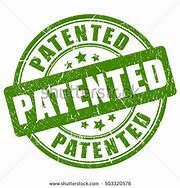A patent is a legal document granted by the Government to an inventor, giving him/her the exclusive right to make, use, and sell an invention for a limited time. Think of a patent as a special certificate that the government gives to inventors. It says, “Hey, you came up with something cool and new, so we’re going to give you the right to be the only one who can make and sell it for a while”. This “while” is usually around 20 years. During that time, nobody else can copy your invention without your permission. In return, the patentee has to disclose full details of the invention in the published patent documents. Once the protection period is over, the patentee loses his rights, and the patent now goes into the public domain, meaning anyone is free to make, sell, or use it.
Patents are intended to encourage innovation by providing inventors with protection for their ideas, thereby incentivizing investment in research and development.
In the modern world, where innovation drives progress and prosperity, the protection of intellectual property rights, including patents, plays a vital role in nurturing creativity and encouraging investment in research and development. Like many other countries, Pakistan has also recognized the significance of patents in promoting innovation and economic growth. The Patent Ordinance 2000 is designed to encourage innovation of the inventors, and exclusive rights over their inventions for a limited period. One of the fundamental principles of Patent Laws in Pakistan is that patents are granted for innovation, involving an inventive step, and are capable of industrial application. This means that the invention must be novel and never before seen, not known or obvious to someone skilled in the relevant field.
Patent Laws in Pakistan:
In Pakistan, at the moment the Patents Ordinance, 2000 (LXI of 2000), is enforced with effect from the 2nd December 2000. Previously, the Patents and Designs Act, of 1911 remained enforced for a long time. It was a symbol of British legislation and extensively based on English principles on patents and design. The first law relating to Patents was enforced in 1865 and later recast in the form of the new Act in 1859. Presently, the Patents Ordinance, 2000, the Registered Designs Ordinance, 2000, and the Registered Layout-Designs of Integrated Circuits Ordinance, 2000, are promulgated to meet the requirements of the 21st century’s competitive world.
Comparative Analysis of Patents in Pakistan and Neighboring Countries
- Pakistan:
- The first process is to check whether the invention is patentable or not because all inventions are not patentable under the Law of Patents.
- Before filing of Application for the registration of a Patent, you should be aware that the true and first inventors of the invention or his or as the case may be, their assignee or successor-in-interest and the legal representative are entitled to file for such application.
- An application for a grant of a patent, by true and first inventor shall be made in for, P-1 other than conventional application.
- Each application shall relate to one invention only.
- The application shall be examined by the patent office.
- After successful examination, the application will be published after 18 months of first filing.
- If there is no objection or opposition from any other person, the patent is sealed once the application has been duly filled and submitted form P-10 and the application is granted for 20 years.
Other Countries:
Countries like China, India, and Japan shall bear the same policies with slight changes. Like in India and Pakistan, the patent will be given to the individual who will first fill out the application form no matter at what actual date it was invented or created whereas in the case of the EU (European Union), whoever’s application reached the Patent Office will first have a staunching claim.
Mode of Creation:
According to Section 10(4) of the Indian Patent Act, 1970, the best mode to carry out the invention shall be written in the application, whereas in other countries there is no such application. There is no obligation on the part of the inventor to disclose the facts regarding the ‘best mode’ in which it can be carried out. The principal requirement in Pakistan’s Patent Law is to state the invention in clear and complete terms.
Language of Application:
In India and Pakistan, the applications for patents are accepted only in the language of English, but in the EU, China, Japan, and other countries, one can fill out forms in either native language or in English. Also, the EU accepts French, German, and translated versions.
Grace Period:
The US provides a one-year grace period which means the inventor is authorized to showcase his publication for one year before filling out the application form for a patent. It is presumed that this one-year time period will not affect the rights of the inventor of the invention. There is no such provision in India and Pakistan.
Procedure for Obtaining Patents:
The process of obtaining a patent in Pakistan involves filing a patent application with the Intellectual Property Organization of Pakistan (IPO), the same happens in every other country. However, in Japan, America, and China, post-grant opposition can be filed to challenge the validity of patents.
Patentable Subject Matter:
Pakistan and the US allow for inventions that are new, useful, and non-obvious. However, there are some differences in what can be patented. For instance, the USA allows patents for business methods and software, whereas Pakistan may have more limitations on these types of patents.
Examination Process:
Pakistan, India, and some other countries conduct examinations on patents but the US follows a rigorous examination process, including the submission of claims and responding to office actions, which can be a lengthy process.
Conclusion:
While Pakistan, India, China, Japan, and other countries follow the same kind of Patent procedure and have the same duration period for a patent, regulations, examination procedures, and litigation processes are different in each country. Pakistan is lagging behind its counterpart in technological inventions and patents and we need to foster innovations and do need to step up legislative guidelines to be able to nurture and allow for more novel ideas.


